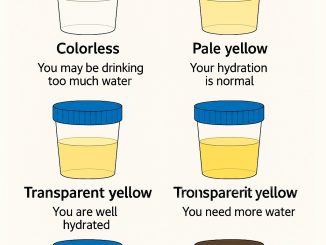Clogged arteries are a serious health concern that can lead to life-threatening conditions like high blood pressure and heart attacks if left unaddressed. While the effects of clogged arteries may not be immediately noticeable, your body often sends subtle signals that something is amiss.

By being attuned to these warning signs, you can take proactive steps to improve your cardiovascular health before it’s too late. Arteries are the blood vessels responsible for transporting oxygenated blood throughout the body. When these arteries become clogged with plaque buildup, it restricts blood flow and can have dire consequences.
Clogged arteries increase the risk of high blood pressure, heart attacks, and other cardiovascular issues. Recognizing the early signs of this condition is crucial for seeking timely medical attention and implementing lifestyle changes to unclog and maintain the health of your arteries.
10 Signs of Clogged Arteries:
1. Nausea
Persistent nausea can be a symptom of clogged arteries, as the body’s inability to properly circulate blood can trigger this unpleasant feeling. If you experience ongoing nausea, it’s essential to consult your healthcare provider.

Credit: Shutterstock
2. Chest Pain
Chest pain, also known as angina, is a common sign of clogged arteries. This discomfort is caused by reduced blood flow to the heart and can radiate to the left arm, shoulder, jaw, and upper back.

Credit: Shutterstock
3. Shortness of Breath
If you find yourself unexpectedly short of breath, even during periods of rest, it could be an indication of clogged pulmonary arteries. This restriction in blood flow to the lungs can make breathing difficult.

Credit: Shutterstock
4. Weakness or Numbness on One Side
Clogged carotid arteries, located on either side of the neck, can restrict blood flow to the brain and cause weakness or numbness on one side of the body.

Credit: Shutterstock
5. Slurred Speech
Similar to the effects of a stroke, clogged carotid arteries can also lead to slurred speech, as the brain is not receiving the necessary blood supply.

Credit: Shutterstock
6. Vision Loss
Blockages in the exterior branch of the carotid artery can impair blood flow to the eyes, resulting in sudden vision loss or blurred vision.

Credit: Shutterstock
7. Leg Pain
Clogged peripheral arteries in the legs can cause painful cramping or discomfort, particularly during physical activity.

Credit: Shutterstock
8. Cold Feet
When blood flow is restricted, your extremities, such as your feet, may feel unusually cold. This is a sign of compromised circulation.

Credit: Shutterstock
9. Slow Healing of Foot Injuries
Injuries to the feet or lower legs may heal slowly or not at all if the arteries supplying blood to these areas are clogged.

Credit: Shutterstock
10. Heart Palpitations
Noticeable changes in your heartbeat, such as fluttering, pounding, or irregularity, could indicate that your heart is working harder to pump blood through clogged arteries.

Credit: Shutterstock
Fortunately, there are steps you can take to improve the health of your arteries and prevent further damage. Adopting a heart-healthy diet, engaging in regular exercise, maintaining a healthy weight, and quitting smoking can all contribute to unclogging and maintaining the integrity of your arteries. In some cases, your healthcare provider may also prescribe medication to help manage cholesterol levels and reduce plaque buildup.
Recognizing the early warning signs of clogged arteries is crucial for maintaining your cardiovascular health. By staying attuned to your body’s signals and seeking medical attention when necessary, you can take proactive steps to address this condition and reduce the risk of devastating health consequences. Remember, your health is your most valuable asset, so don’t hesitate to prioritize it.


